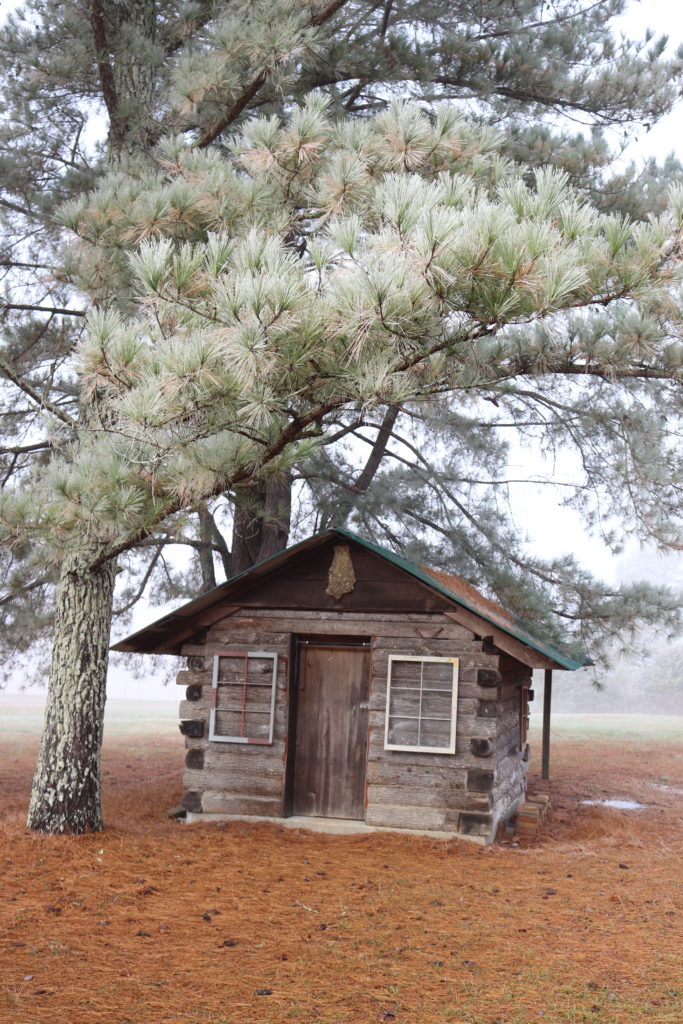
The illness mentioned in my last post lasted longer than I thought it would. I ended up being out of commission for several weeks. Thankfully I recovered in time for a planned, 4-day trip with my family over Christmas. While I didn’t intend to ignore this blog for so long, I was forced to take a temporary hiatus and am glad to be back!
Change is good sometimes
At my son and daughter-in-law’s suggestion, our family agreed to forego exchanging Christmas gifts this year and instead pool our money for a trip. Because we were not going to be home over Christmas, we did not put up a Christmas tree, didn’t bake any cookies and were not home to participate in the Christmas Eve service at church. While those things are special, I have to say we had the most stress-free, easy going, quality time together for the holiday. It was great to get away and leave the thoughts of home, work and school behind to recharge and get refreshed.
Destination: Nashville, TN!
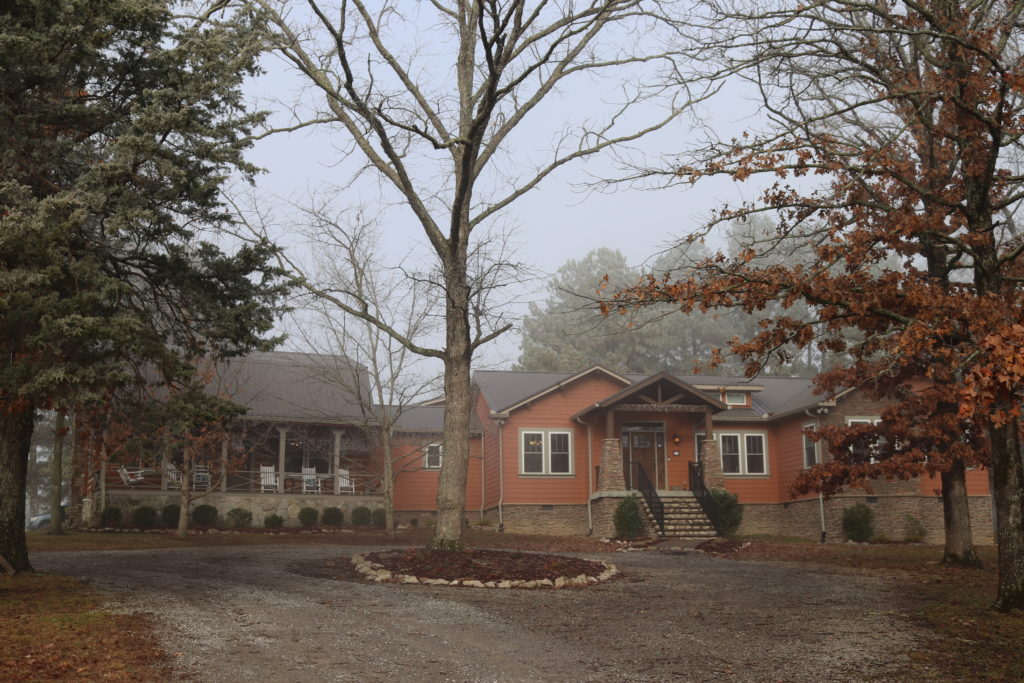
The AirBnB on 5 acres east of Nashville was perfect for 10 people. It was called Ginger Lodge and was luxuriously outfitted with wood floors, granite countertops, tiled showers with glass doors. There were large TV’s & comfy chairs in every bedroom, 2 living rooms, dining room for 10 and a hot tub 2 steps from the back door. The owners are interior decorators and they did a fabulous job on this Craftsman style home. Activities during our stay included hiking at a state park, movie night, games for all ages, soaking in the hot tub, frisbee golf, and eating out in Nashville. On our last afternoon we toured The Hermitage. Let me take you with us as we explored Andrew Jackson’s 1200 acre estate.
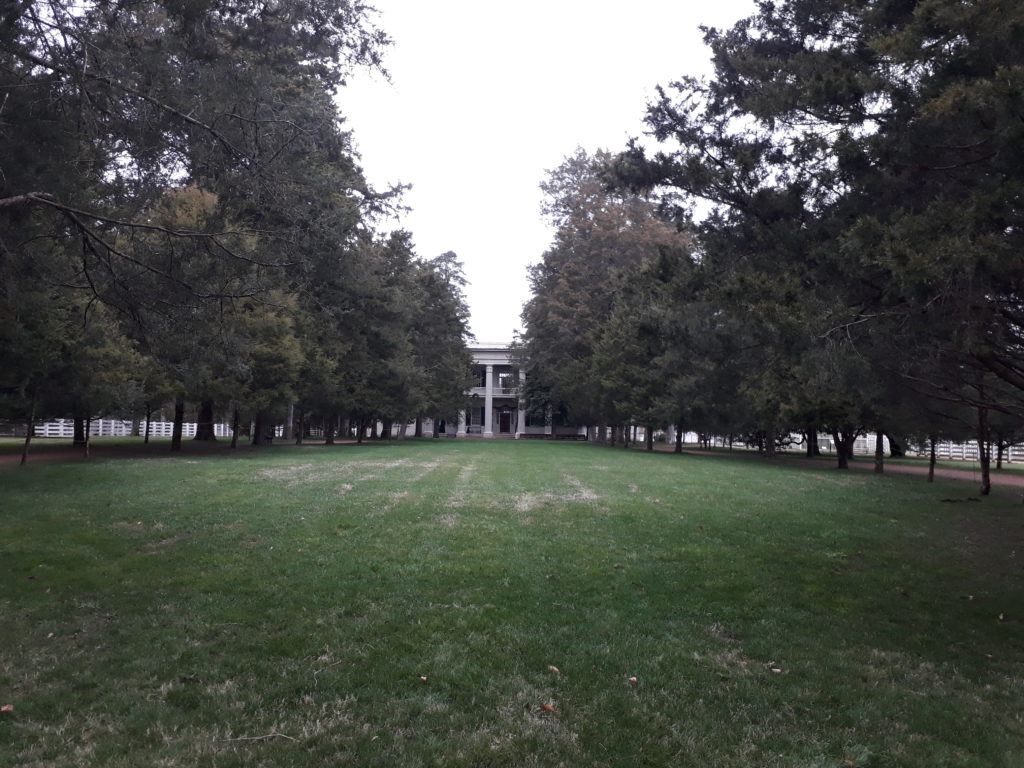
The Hermitage
Tickets were $10-20 depending on stage of life and every visitor received an audio device. These proved to be a very effective way to learn about the people and artifacts of The Hermitage and allowed all ages go at their own pace. There are even audio messages geared for the children under 12. After going through the Visitor’s Center, we walked on a paved path to reach this view of the Greek Revival-styled home. Buggies in the 1800’s would travel down the tree-lined lane on the right, let passengers out on front porch of the house and leave by the lane on the left. This was 50-60 years before the Civil War in the South with both the good and bad of that period.
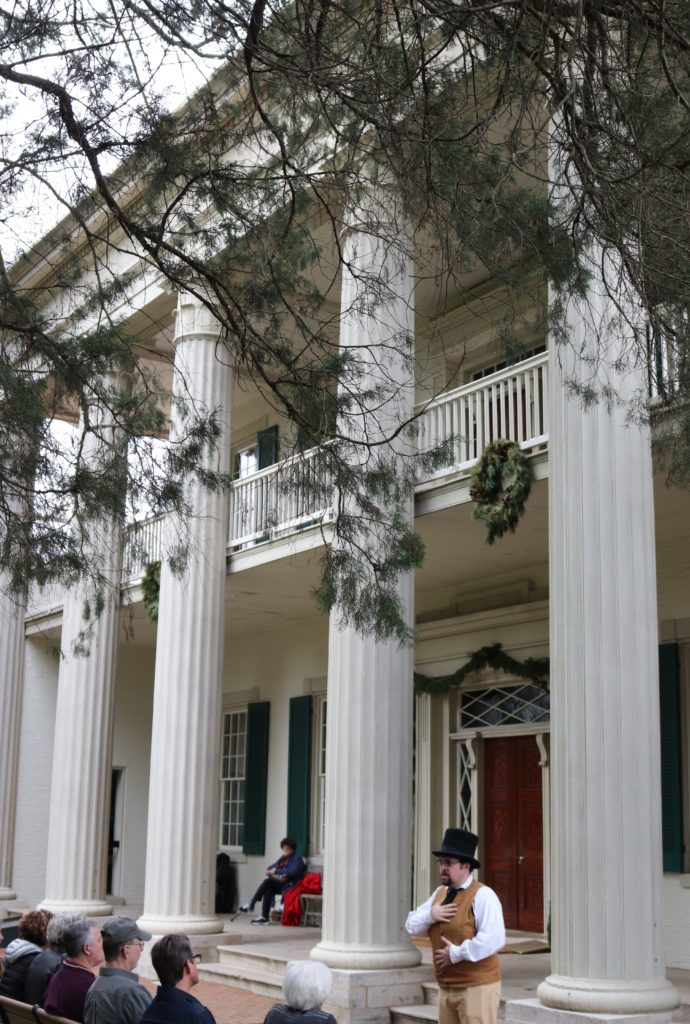
Andrew and Rachel Jackson bought 425 acres of what would become The Hermitage in 1804 in their early years of marriage and lived in a log cabin on the property for the first 17 years. In 1819 construction began on the mansion you see above and they moved in in 1821. It first was a Federalist style home with a flat front made of red brick. After a fire in 1834, they remodeled extensively adding the 2 story porches, the Greek columns and one-story wings on either side, painting all the bricks white.
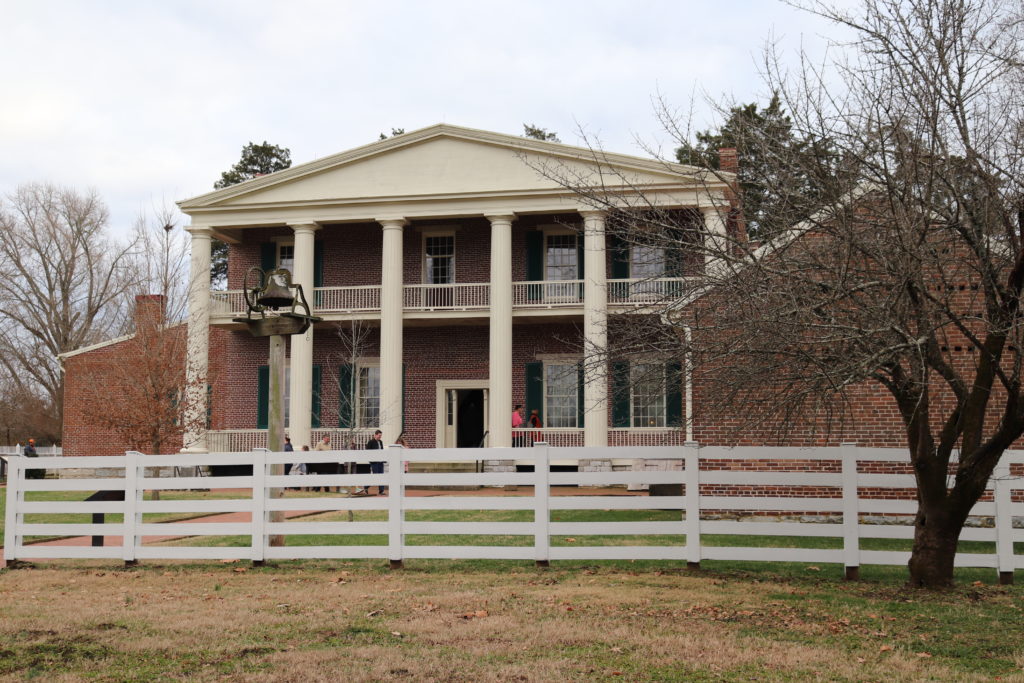
What? No pictures?
This is the back of the house kept in the red brick Federalist style. We were taken in groups of 10-12 through the house, upstairs and down with docents explaining notable pieces in each room. No photos were allowed inside which I found rather “old school.” In decades past, UV light from a camera flash was thought to harm the pigments in art work, breaking down the molecular bond. Studies have proven it would take millions of flashes, shot within 10′ of the subject before any damage is detected. With today’s technology of ISO’s ranging from 100 – 64000, DSRL cameras can do a decent job of capturing interior shots without flash during daylight. Flash photography can be rude to other guests, so I understand the etiquette needed in some situations. Nevertheless I was very disappointed I couldn’t take any non-flash pictures of the amazing interior.
One reason the interior was so amazing is that 90% of the decor in each room was original. (The French wallpaper alone is 189 years old.) This is quite a rarity among historic homes. Only Jackson family members ever lived in this house, 3 generations worth, and when a family member moved out or died, they left the original items in place. From there, the Hermitage Women’s Association bought it and opened it to the public as a museum in 1889.
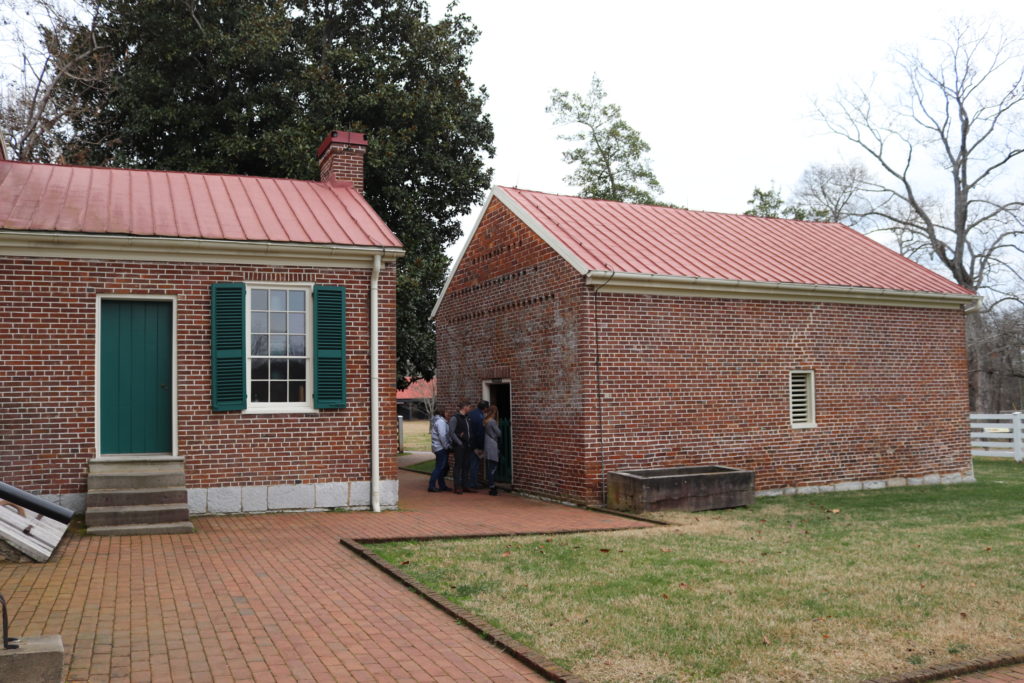
At the back of the house is an attached kitchen with a green door and the detached smokehouse. Kitchens were usually detached or divided off the main living quarters to keep the heat and smells of cooking away from the house.
The Unfortunate Truth of the Time
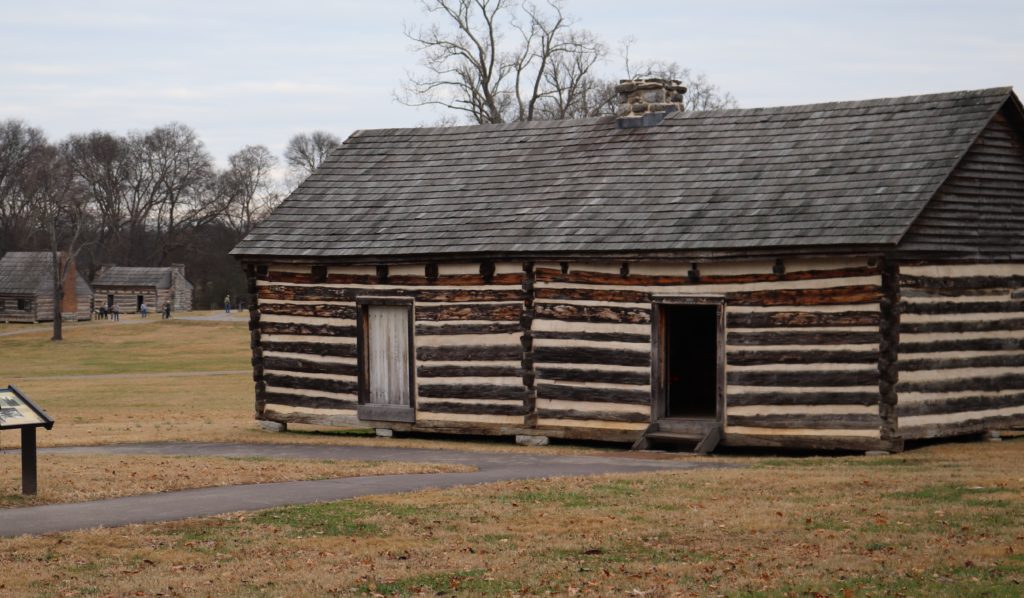
Andrew Jackson owned 9 slaves when he bought the land now referred to as The Hermitage. As he acquired more surrounding land, the number of slaves rose to 100 over 25 years. By the time of his death in 1845, he owned 150 slaves and nearly 1200 acres. A log book listing the buying and selling of slaves registers approximately 500 slaves living at The Hermitage one time or the other in the nearly 50 years Andrew Jackson owned it.
Alfred
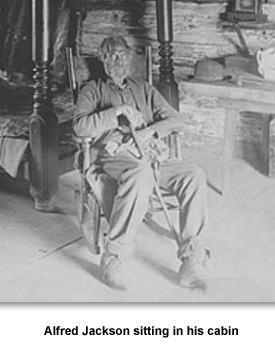
One of the most remembered slaves was Alfred, son of Betty, the house cook. Alfred was born at the Hermitage, worked with the horses and maintained wagons and farm equipment until he became Andrew Jackson’s personal servant in the house. After President Jackson died and after the Emancipation, Alfred stayed on the farm becoming a tenant farmer, taking the last name of his previous owner, Jackson. Though he could neither read nor write, he was the first and most popular of the tour guides of the Hermitage because of his first hand accounts and amazing memory. Alfred lived at The Hermitage longer than any other person, white or black. He died at the age of 99 in 1901 in the same cabin he was born in and is buried at the Hermitage Garden, only a step or two from Andrew Jackson’s tomb.
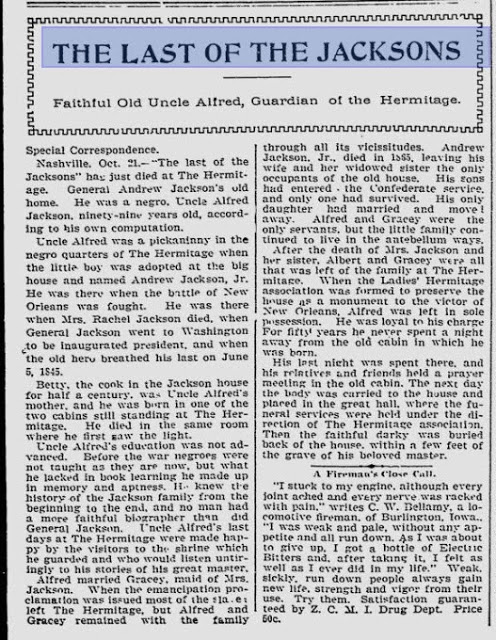
Cotton is King
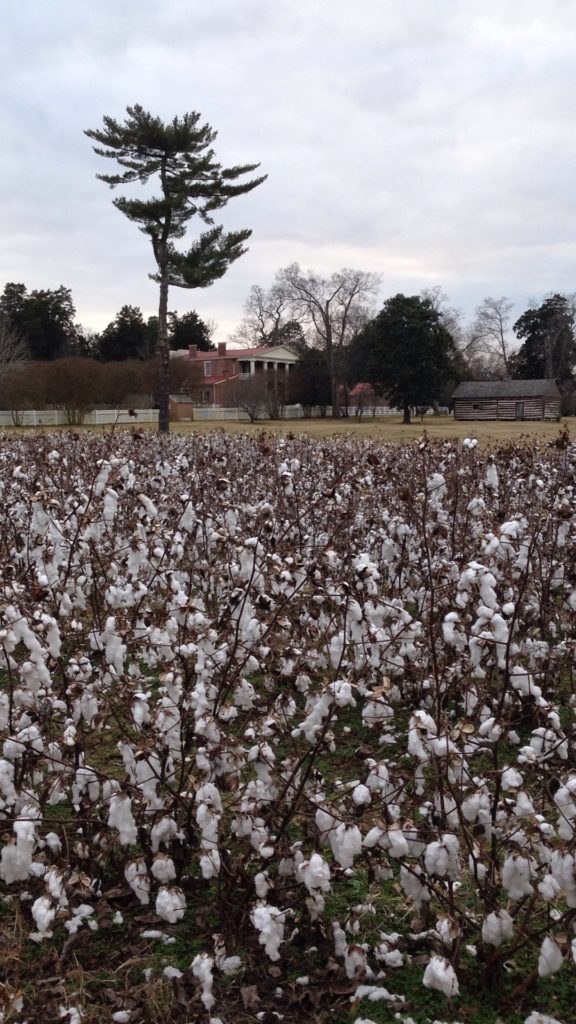
The Hermitage was primarily a cotton plantation, however cotton plants only covered 200 of the more than 1000 acres of the plantation. This was because of the amount of intense labor required growing and harvesting cotton. 94 bales of cotton were being produced at The Hermitage in 1845. Because the land was wearing out and cotton prices were falling, Andrew Jackson’s son, Andrew Jackson, Jr diversified. Dairy products, especially butter, became increasingly important products for sale. In 1850, The Hermitage produced 1,000 pounds of butter.
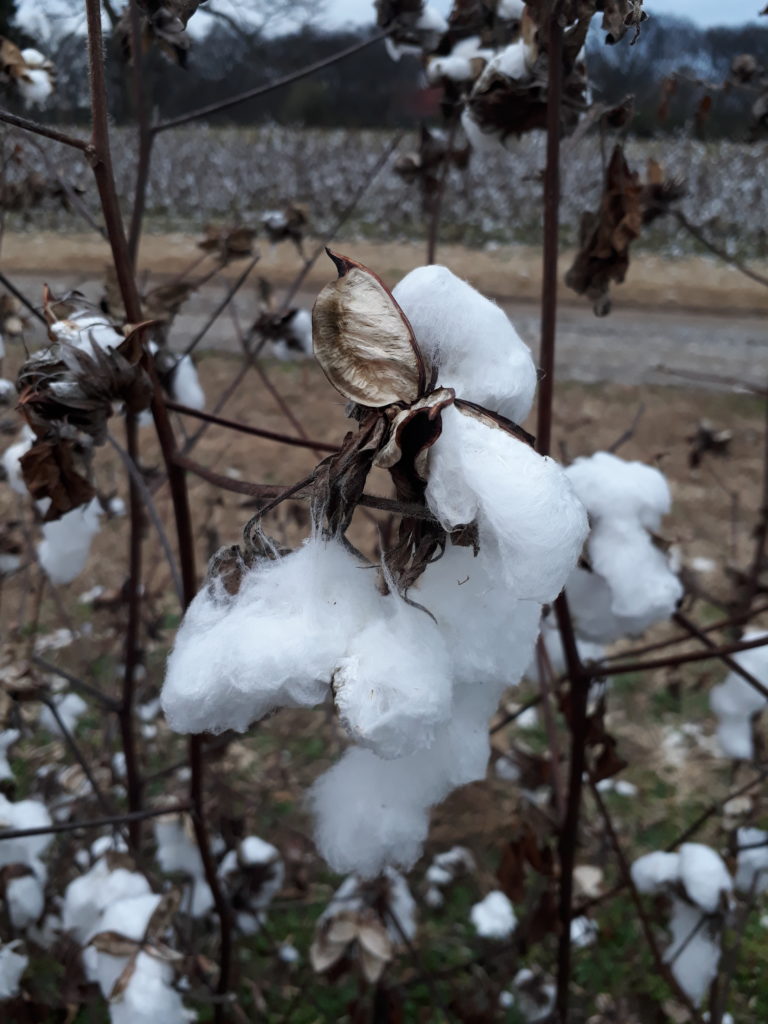
Visitors to the Hermitage were allowed to walk through the cotton field and pick a sample of cotton. I was surprised how prickly the plants were and how seedy the cotton was! Slaves have testified how painful picking cotton was, making their hands bleed. I see now why the invention of the cotton gin was particularly important to get the seeds out of the cotton ~ it takes so much time to do this by hand. One ball of cotton weighs practically nothing, yet an adult slave could pick 200-300 lbs of cotton in a day. Unbelivable!
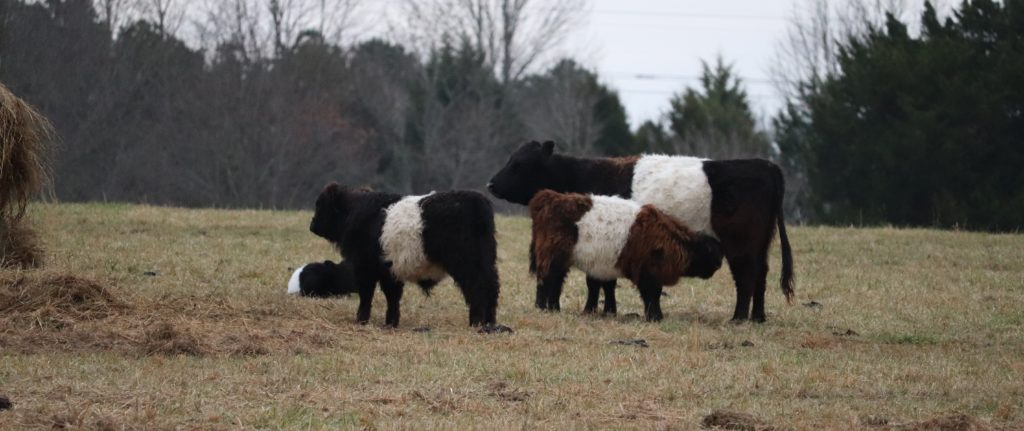
“Just the breed, lady.”
While cotton was the cash crop, the people living at The Hermitage depended on the cows, sheep, pigs, chickens, corn, oats, wheat, barley, potatoes, sweet potatoes, peas, beans, apples, pears, peaches, quince, cherries and other fruits to sustain them. Wood from the nearby woodlots heated their cabins and the mansion as well as provided fuel for the cookstoves. You can see why such a farm kept everyone very busy! The above photo is of Belted Galloways, a heritage breed of beef cattle. While standing there admiring the pastoral scene, my daughters overheard a woman puzzled as to what the farmer did to make the white stripe on the cattle. Though someone told her it was “the breed,” she argued confidently that it must be something the cow wears when they are young . . . . oh boy.
Rachel Jackson, Andrew’s wife
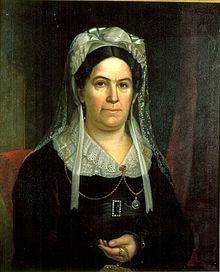
Rachel was born in VA, but at the age of 12, floated down the Cumberland River with her family for nearly 1,000 miles into what is today middle Tennessee. They arrived in April 1780 to become some of the first white settlers of Nashville. Because of Indian attacks they moved to southern KY where she married Lewis Robards at age 18. He however was abusive and she separated from him several times. Her father passed away and her mother moved back to Nashville and opened a boarding house. Rachel left Lewis Robards for good in KY and moved in with her mother in TN.
Rough start to marriage
A young handsome, redhead Andrew Jackson was boarding there and the two struck up an immediate romance. Andrew married Rachel Donelson in 1791 and again in 1794. Sound strange? With the understanding her 1st husband had secured the divorce, she married Andrew Jackson while in Nachez, MS visiting friends. Upon their return to Nashville, they discovered Robards had not finalized the divorce, which thereby nullified their marriage. Such documents were mixed up in the governmental transition from Virginia Territory to KY statehood. Andrew and Rachel finally legally married in Nashville in 1794. However, this “scandal” & Rachel’s virtue was later brought up in Jackson’s campaign for President (by his opponent John Quincy Adams) and it brought Rachel much stress & embarrassment. She said “I would rather be a doorkeeper in the house of God than live in that palace in Washington.”
Andrew and Rachel had no biological children but they adopted 3 boys and were guardians for 5 more children. Theodore was an Indian orphan whom little is known, Andrew Jackson Jr was Rachel’s nephew, and Lyncoya was a Creek Indian orphan who died of Tuberculosis at age 16. After the death of Rachel’s brother, his 5 children moved in with the Jackson’s at The Hermitage.
Rachel was not a typical First Lady
Though she was educated, Rachel was described as a backwards country woman. She is said to have preferred her family and her church over the political lavish parties and social engagements. Of the few letters that remain of her writing (most were burnt in the 1834 fire), they indicate she loved her family and friends very dearly and missed her husband deeply when he was away.
During the Presidential campaign, her health declined. Though he won, she died 3 days before Christmas 1828 of what was believed to be a massive heart attack. It devastated Andrew and he left for Washington, DC with a broken heart, blaming his political enemies for her death. Rachel’s niece served as First Lady of the White House.
Rachel’s Garden
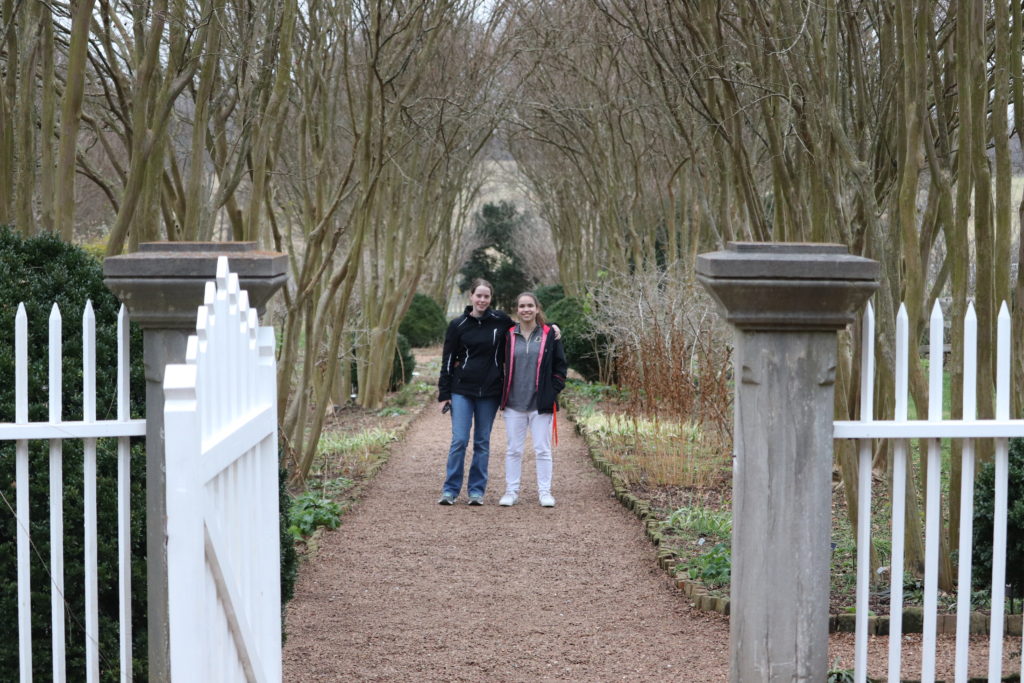
This was a very inviting area of The Hermitage. Rachel’s Garden was surrounded by a white picket fence and had many perennials we see today. I even found a bunny under a bush not 3′ away from me but couldn’t get him to come out for a photo.
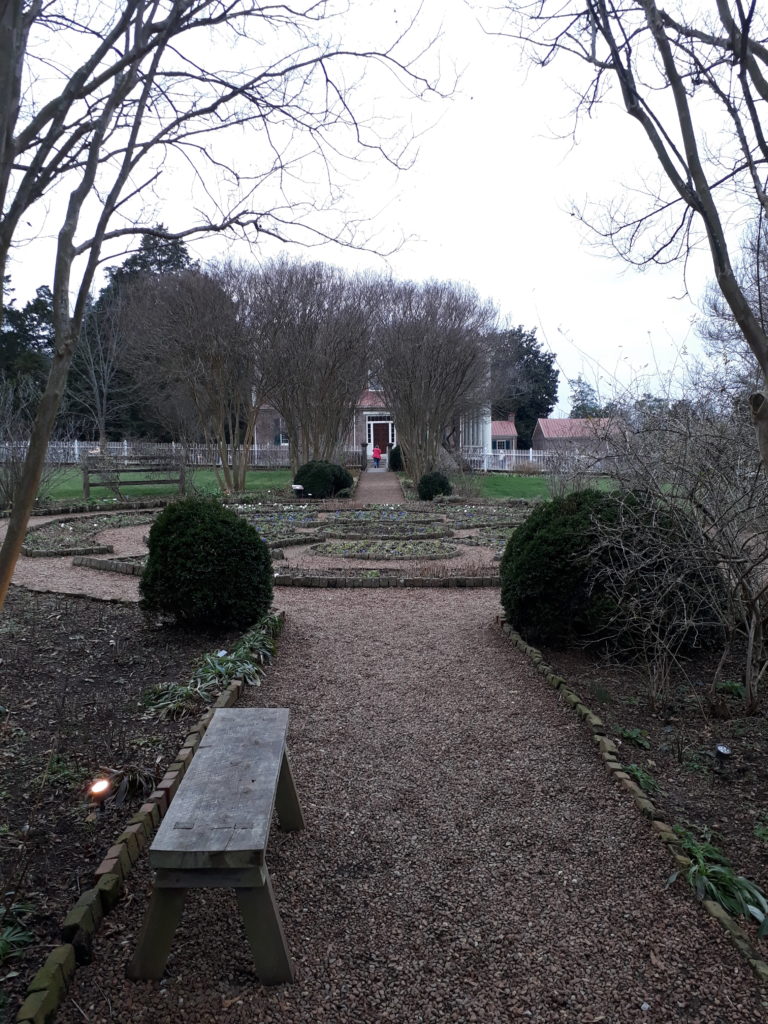
This must be beautiful in the spring and summer though there were many evergreen shrubs. Rachel must have enjoyed walking here as I do along my lane.
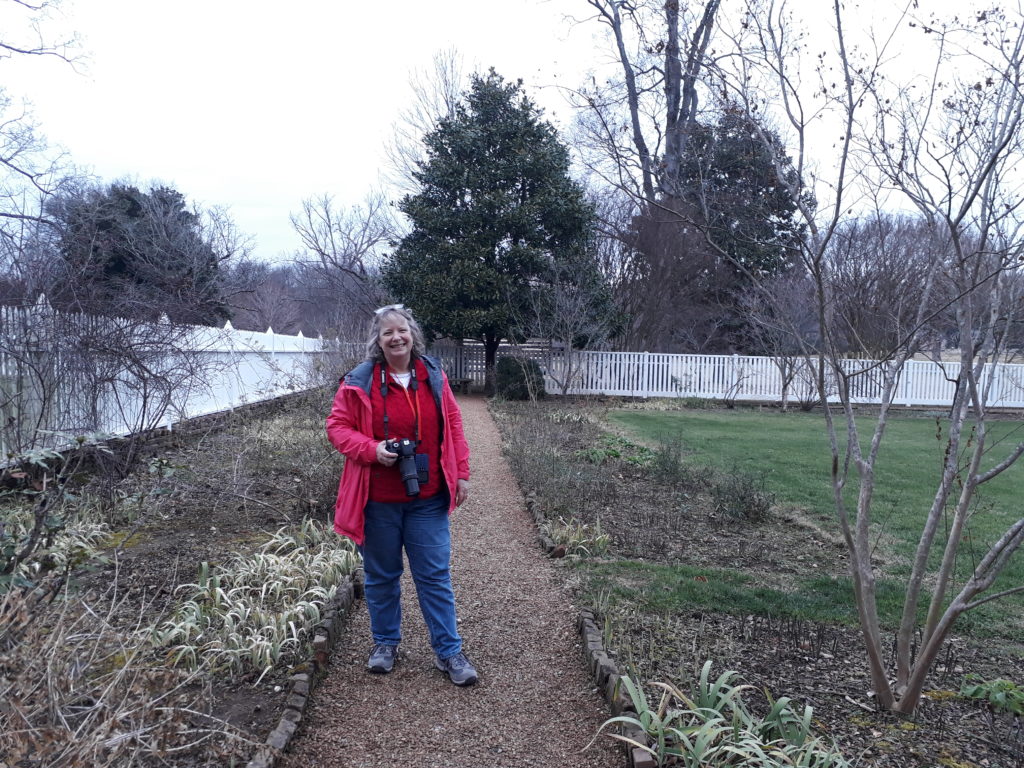
At the end of the stone path behind me is an evergreen type of magnolia tree, very common in the South.
End of Life
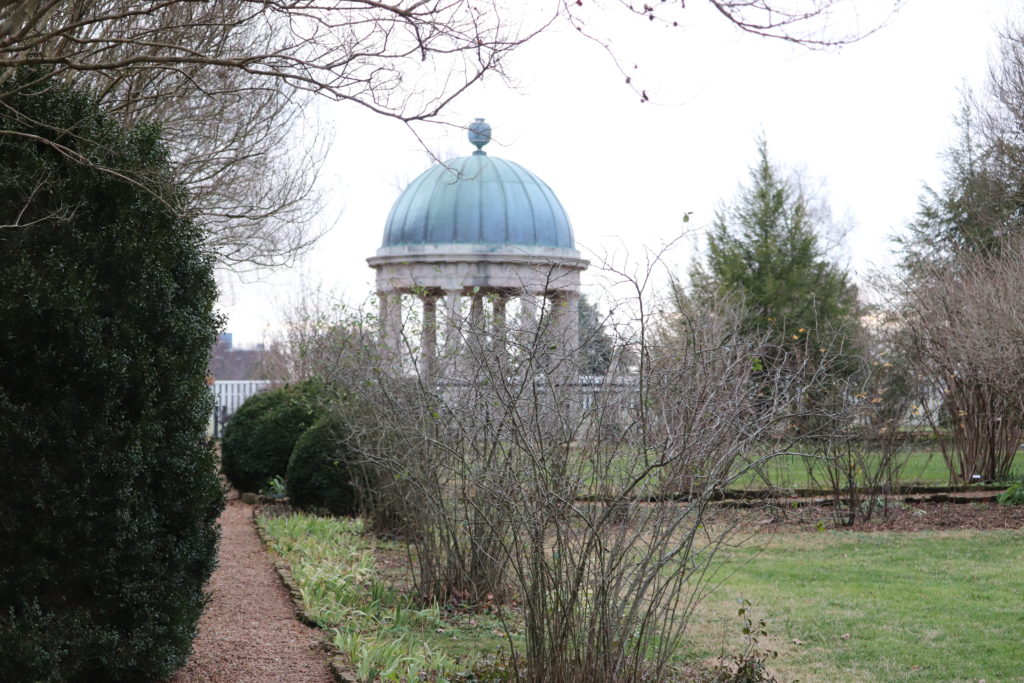
Andrew Jackson’s tomb is in Rachel’s Garden, along with other family members. I wish Government regulations still allowed for family plots like this. It’s so comforting to have the graves close to living family members and in such a beautiful setting.
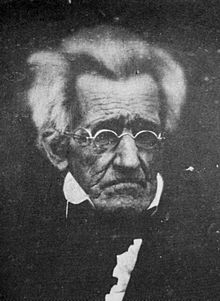
This is Andrew Jackson the year he died at age 78. That doesn’t sound out of the ordinary but for 1845 it was! The average life span in 1850 was 40 (mostly due to high infant mortality rate). Plus he had several chronic health issues probably stemming from a musket bullet remaining in his lung. Likely he was suffering from lead poisoning which caused him to have severe headaches, abdominal pain and coughing. Medical procedures at that time included blood letting and injections of mercury to kill bacteria. So to live almost 40 years beyond life expectancy with not only chronic problems but surviving the medical procedures of the time was truly a miracle. Only 10% of the population at the time lived to be 80. He died of heart failure.
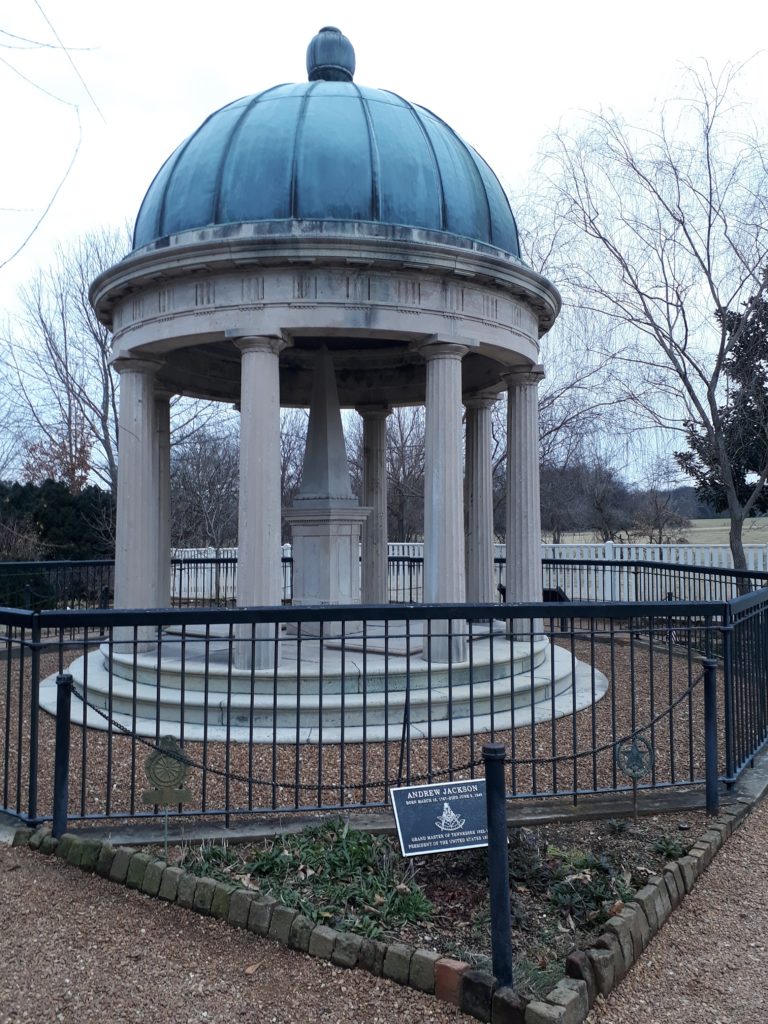
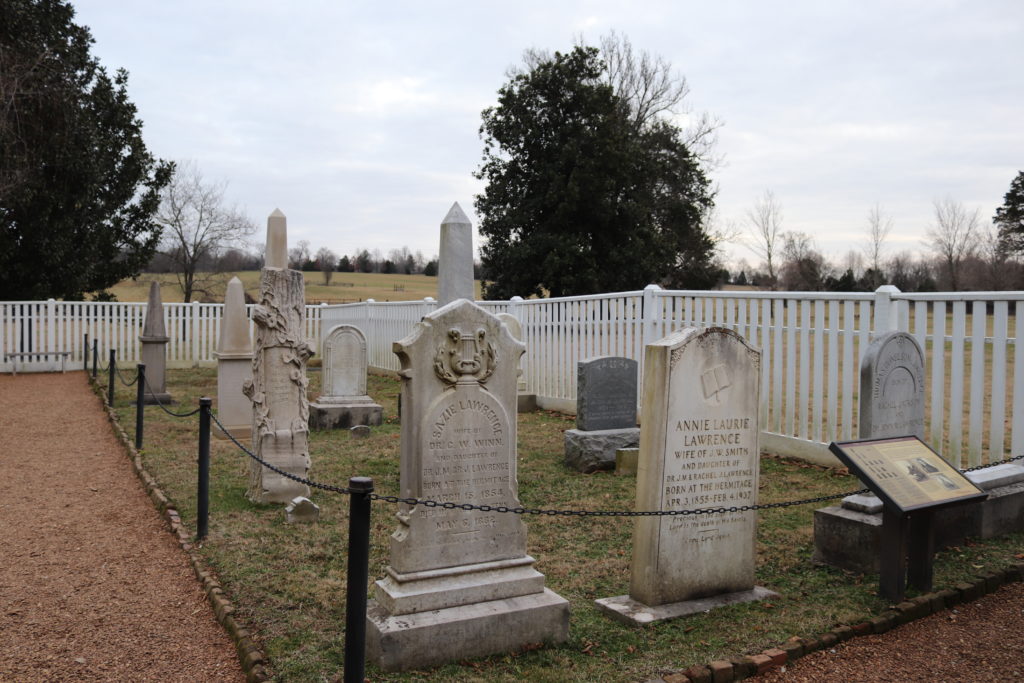
The Jackson family cemetery, next to Andrew Jackson’s tomb in Rachel’s Garden.
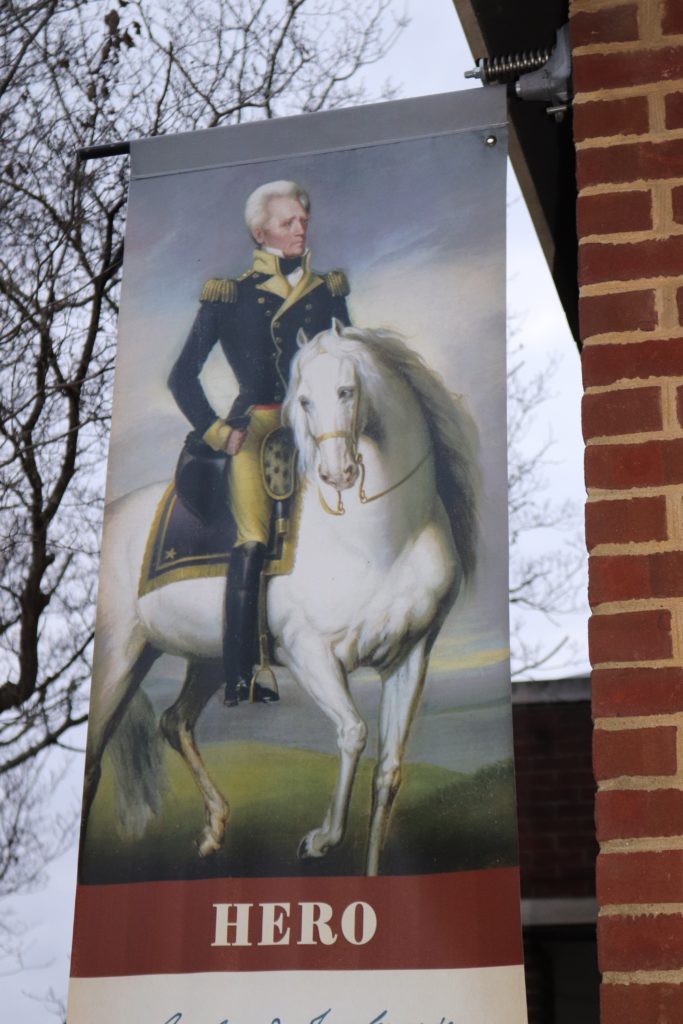
A Definite Stop
It was a wonderful visit to this historic site. The Hermitage Women’s Association has kept so much exactly as it was in 1821 and added a state of the art Visitor’s center. I highly recommend it if you are ever in the Nashville area.
I’ll be back soon with more photos of our trip, with a focus on hiking through Long Hunter State Park. We saw the same thing we ate for Christmas dinner. Care to guess?
Did you explore anything new over Christmas break? I’d love to hear it in the comments.
Till next time,
Carolyn
Thank you for sharing your family’s trip! What a wonderful tour; I appreciate being in the back seat. 😊
I enjoyed the journey ! Interesting, and great pictures!
Such an interesting trip and beautifully shared!